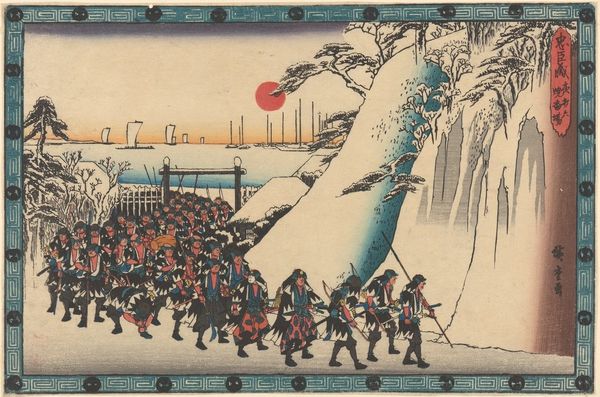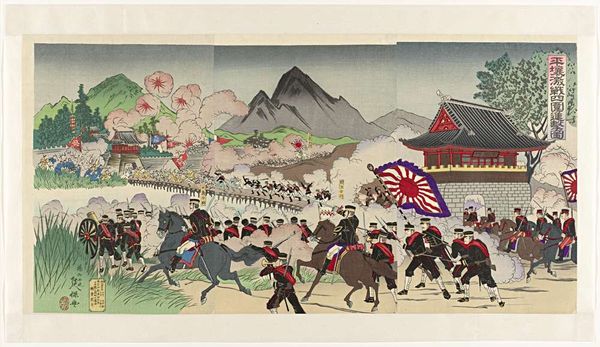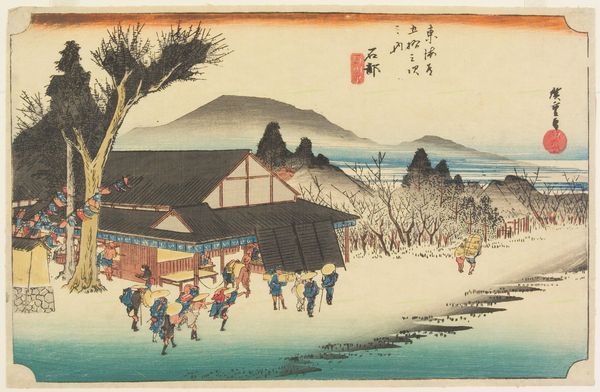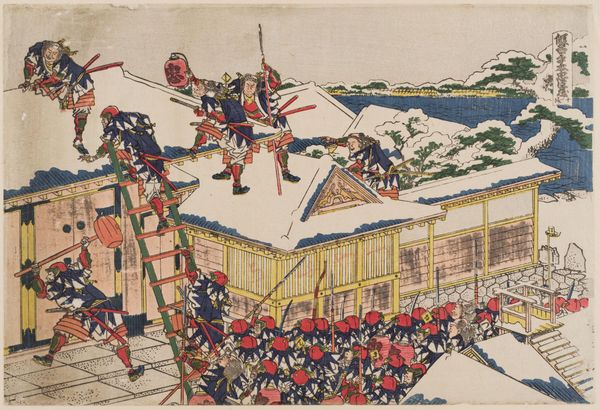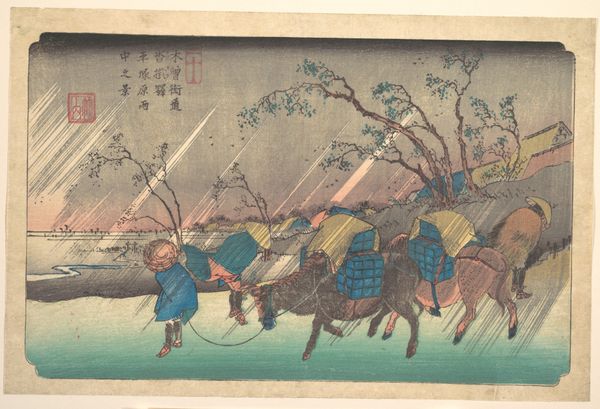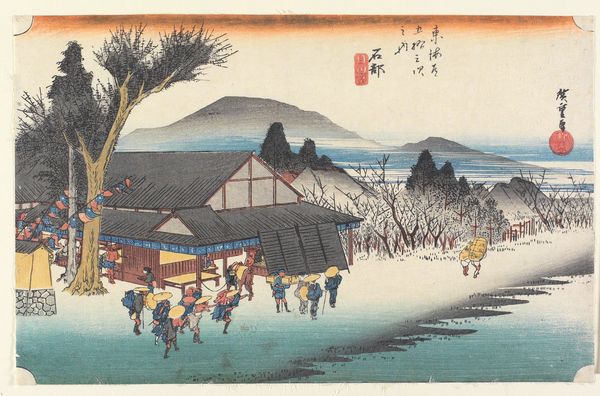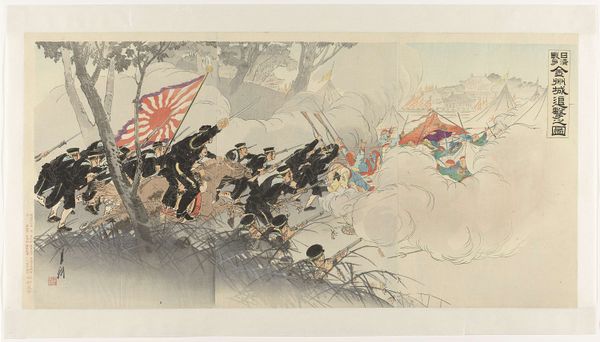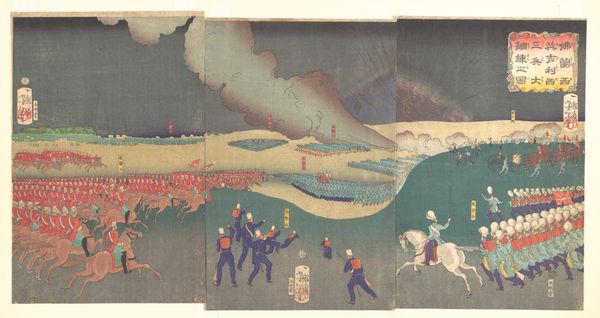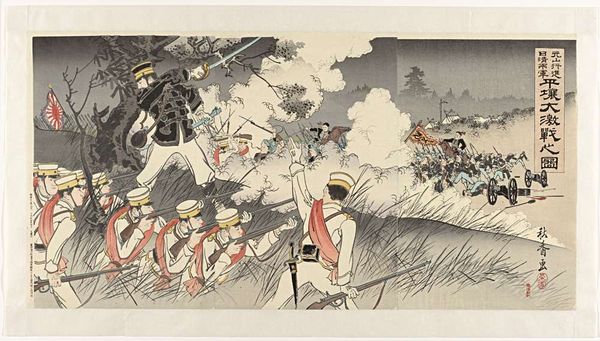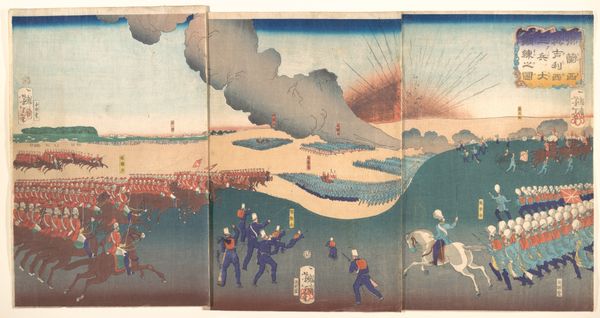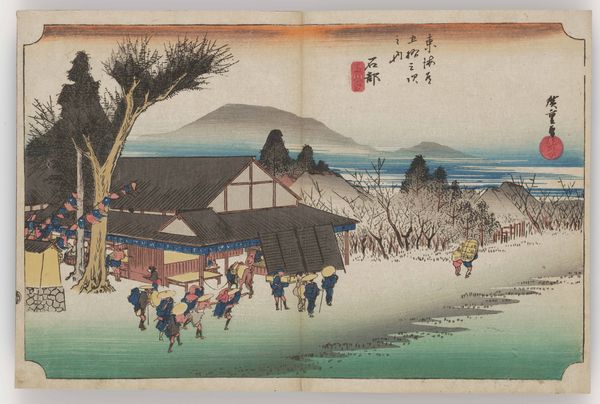
Copyright: Public Domain
Curator: Let’s take a look at this print titled “Sino-Japanese War,” created in 1895 by Kobayashi Ikuhide, currently in the collection of the Art Institute of Chicago. It’s a woodblock print, rendered in watercolours. Editor: My initial impression is of dynamic movement contrasted with stark stillness. The vivid explosions disrupt the serene snowy landscape. The red against the snow makes a dramatic statement. Curator: Precisely. What’s compelling here is how the image uses a traditional Ukiyo-e aesthetic to depict a scene of modern warfare. The landscape isn't just a backdrop; the snow, for example, highlights the challenging conditions and perhaps alludes to themes of resilience. Editor: The means of production – the woodblock printing itself – is fascinating when considering the subject matter. There's a tension between the craft traditions inherent in the printmaking process and the industrial advancements showcased by the presence of a train. How would this have been consumed and understood by the general public? Curator: Great question. Prints like these were widely circulated, effectively functioning as visual news reports for a largely literate public. The representation of soldiers charging, the train's presence, and the rising sun flag all played a part in shaping popular sentiment. This imagery was designed to both inform and bolster national pride. Editor: Absolutely. It makes me wonder about the socio-political impact. By distributing scenes like this widely, it effectively serves as propaganda, reinforcing national narratives and shaping public perception of the war itself. And given the ubiquity of these prints, consider the ecological cost of paper and ink to produce this imagery. Curator: Indeed, examining it through a social lens, we can appreciate how art serves broader cultural functions. The formal realism adopted highlights the "objective" nature of war, omitting much of the actual suffering of the soldiers and civilians. Editor: It also brings up interesting questions about accessibility of the artwork. The fact it’s a print makes it easily replicable but does it make the consumption of these images feel trivial? And how do war narratives function in the construction of national identity? Curator: This makes us ponder about image circulation and reception and reminds us that art rarely exists in a vacuum; instead, it is enmeshed in social relations, political dynamics, and historical contexts. Editor: I leave this viewing with new questions regarding production costs, the implications of art’s reach in informing/misinforming, and, especially, about the effects and influence these images had and still have on forming views about war and the construction of nationhood.
Comments
No comments
Be the first to comment and join the conversation on the ultimate creative platform.
